Text
Integration of the Agribusiness Supply Chain in New Zealand
An important component of New Zealand's dynamic economic fabric, agribusiness plays a significant role in the development of the nation. Supply chain management in NZ is the intricate web of processes that makes this industry successful. A growing number of New Zealand's agribusinesses have adopted supply chain integration in recent years as a way to increase productivity, save expenses, and ensure the quality and freshness of agricultural products as they travel from the farm to the market.
New Zealand's Agricultural Supply Chain Management: An All-encompassing Approach
New Zealand's agriculture industry uses a multifaceted approach called supply chain management, or SCM. This approach entails the effective coordination of several production, processing, and distribution phases. The diverse terrain and widely spaced farms in New Zealand present unique topographical problems that demand innovative solutions. SCM therefore turns into the key that opens a responsive network made up of distributors, merchants, processors, and farmers.
By applying SCM techniques, New Zealand's agribusinesses can optimize their processes and guarantee that goods flow through the supply chain swiftly and effectively. Because supply chain operations are integrated, stakeholders can keep an eye on and manage each stage of manufacturing. This is true for Marlborough's smaller vineyards as well as Waikato's larger dairy farms. When consumers want to know where their goods come from and how they got there, this transparency is essential regardless of age.
Distribution in New Zealand: Linking Farmers with Consumers
The immensity of the agricultural landscape in New Zealand is one of the primary barriers to distribution. Food must be transported from farms to tables via a robust distribution network as many farms are located in remote areas. In New Zealand's agribusiness industry, distribution refers to moving agricultural inputs from fields to processing facilities and, ultimately, to retail stores or distribution centres.
In response to these issues, agribusinesses in New Zealand are implementing creative distribution tactics. Technology integration is essential for distribution in NZ network optimization. For instance, the use of GPS tracking, which enables real-time monitoring of the movement of objects, guarantees timely and effective deliveries. Products are combined, processed, and sent from centralized distribution centres that are thoughtfully positioned across the country to further expedite distribution.
In the agriculture sector of New Zealand, cooperation is also crucial to distribution. Promoting cooperation between retailers, wholesalers, and farmers creates a cooperative distribution network. Consequently, waste is reduced, inventory management is enhanced, and supply chain efficiency is increased. An easy connection, for example, can be made between a dairy farmer on the South Island and a distribution centre to ensure prompt delivery of fresh milk to store shelves across the country.
Encouraging Trade Between Farmers in New Zealand and Global Marketplaces

New Zealand's agribusiness depends on efficient transportation networks to get crops from huge fields to consumers in the country and elsewhere. The nation's export-oriented agriculture depends on an effective transportation infrastructure to ensure the reliable and timely delivery of goods to customers around the globe.
The transportation NZ limitations imposed by novel Zealand's topography are being met with novel solutions by the farming sector. To accommodate the distinct needs of different agricultural products, transportation is changing. Examples of these developments include containerization for bulk cargoes and refrigerated vehicles for perishables. Additionally, by integrating data-driven technologies, transportation fleets may be maintained predictively, minimizing disruptions and guaranteeing the seamless flow of goods.
In the agriculture sector of New Zealand, efficient and ecologically responsible transportation methods are a crucial component of supply chain management. Agribusinesses are looking for greener transportation methods in response to growing environmental consciousness. Examples of this include employing electric vehicles, optimizing delivery routes to reduce carbon emissions, and integrating land, rail, and marine transportation into a single, more eco-friendly system.
Using supply chain management techniques, New Zealand's agribusiness is fast responding to the unique issues brought about by its location and the demands of the global market. By optimizing their operations, agribusinesses also contribute to enhancing the nation's reputation for sustainable agriculture by optimizing distribution and transportation networks. Adopting new supply chain techniques as the industry evolves is essential to maintaining New Zealand's agriculture sector's resilience and competitiveness on the world stage.
0 notes
Text
New Zealand's Unique Obstacles in the Context of Logistics Resilience Development
New Zealand's challenges are distinct and call for innovative solutions, despite the dynamic nature of logistics. Despite being a hub for international commerce, New Zealand's logistics industry encounters distinctive obstacles due to its geographical isolation, diverse topography, and dispersed populace. Technology, long-term planning, and an in-depth understanding of the local conditions are all components of a solid strategy required to address these issues. This article examines how the logistics industry in NZ is undergoing a transformation to become more environmentally sustainable, trouble-resistant, and efficient while delving into the complexities of the sector.
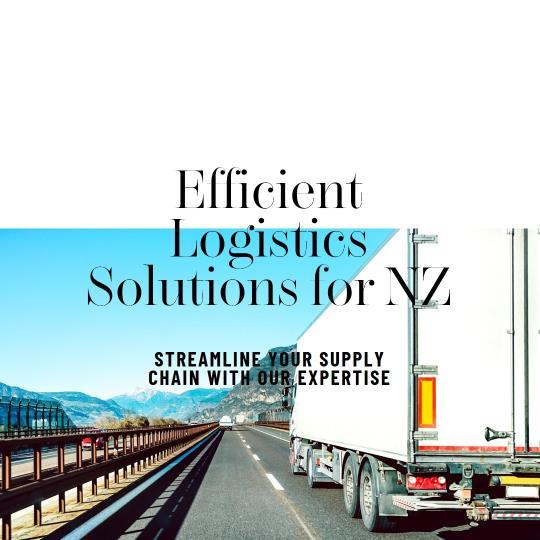
Preparing Logistics New Zealand for Subsequent Success
The sector is not only surviving but flourishing despite the distinctive logistical challenges that New Zealand encounters, due to its adaptability and capacity for recovery. Logistics is demonstrating in New Zealand how adopting novel concepts can transform challenges into opportunities. A convergence of innovative technologies, ecologically sustainable practices, and strategic foresight is enhancing the effectiveness and preparedness of logistics.
As the world becomes more interconnected, alternative sectors may find solace in the challenges faced by the logistics industry in New Zealand. Emphasizing supply chain and warehouse management demonstrates the sector's commitment to continuous development and adaptability. New Zealand not only addresses challenges but also enhances the industry's agility and strength by integrating resilience principles into its logistics operations.
Trade Efficiency through Supply Chain Management in New Zealand
NZ's supply chain management must be more adaptable than in more interconnected regions, despite the country's rugged terrain and numerous islands in the Tasman Sea. Strictly balancing resiliency and efficiency is essential for the seamless operation of the intricate web of supply lines that link producers with consumers. As well as ensuring that each link in the supply chain functions properly and responds quickly, it is critical to enhance the movement of goods between the islands through the use of technology.
Supply chain managers in New Zealand are increasingly using cutting-edge technologies such as automation, data analytics, and real-time monitoring to enhance visibility and streamline operations. The convergence of Internet of Things (IoT) devices and intelligent sensors enables the monitoring of items throughout the supply chain, from fabrication to shipment, thereby providing valuable insights. This realization enhances the efficiency of logistics operations and enables individuals to proactively address issues, thereby mitigating the impact of unforeseen complications.
New Zealand is experiencing a surge in the adoption of sustainable supply chain management practices as well. As consumer awareness of environmental issues increases, corporations are integrating environmentally sustainable practices into their supply chains. The collective effort of all stakeholders is to establish a supply chain that not only fulfills present requirements but also proactively confronts forthcoming obstacles. This consists of optimizing the utilization of packaging materials and reducing carbon footprints.
Efficient Logistics: The Core of Warehouse Management in New Zealand
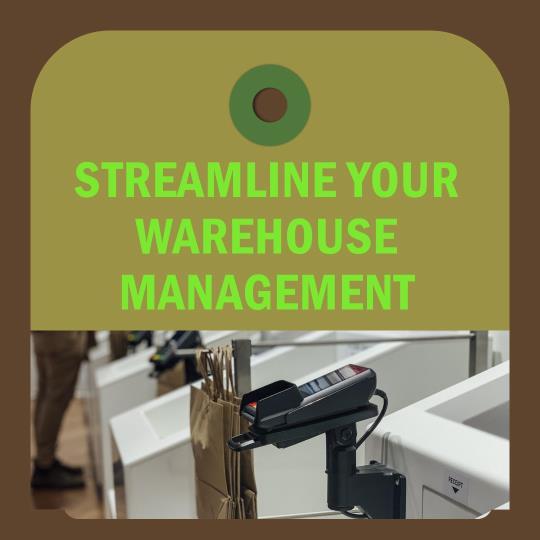
As its logistical backbone, warehouse management in NZ ensures that goods progress efficiently through the supply chain. Intelligent warehouse placement and efficient inventory management are necessary in distinct regions, which vary in terms of geography and demographics. Warehouses serve as crucial strategic nodes that facilitate expedited and cost-effective delivery, in addition to their intrinsic storage functions.
Warehouse management systems are evolving to become more adaptable and lightweight due to the distinctive challenges posed by New Zealand's geography. As they optimize vertical space utilization and diminish the necessity for expansive horizontal storage, automated storage and retrieval systems (AS/RS) are growing in popularity. Land scarcity makes it particularly critical in regions.
In contrast, the prevalence of robots in office labor is steadily increasing. Simplifying the picking and packaging process with robotic arms and fully automated guided vehicles (AGVs) reduces the need for manual labor and increases overall output. By mitigating the impacts of worker shortages and other challenges, the dispersed population's issues are resolved, thereby enhancing the stability of the supply chain.
Warehouse managers in New Zealand are adjusting to the demands of the digital era as the culture of online shopping continuously transforms consumer behavior. It has become critical to ensure timely processing, accurate inventory administration, and efficient order fulfillment. In warehouses, cutting-edge technologies such as machine learning and artificial intelligence are being implemented to forecast demand, maintain optimal stock levels, and increase logistics flexibility.
Logistics is an ever-evolving industry in New Zealand. By collaborating, supply chain and warehouse management are altering the manner in which goods traverse the islands. The industry's capacity to recover from distinctive challenges demonstrates its innovative and adaptable nature. New Zealand's transportation sector is poised to confront the future with assurance and efficacy, owing to the integration of cutting-edge technology and an increasing emphasis on sustainability.
0 notes
Text
In New Zealand, Sustainable and Eco-Friendly Distribution System
Today's fast-paced world demands efficient inventory control and transportation, making environmental challenges facing the distribution industry crucial. If businesses want to satisfy customer demands and minimize their carbon footprint, they must discover intermodal transport options and optimize inventory levels. Follow us as we go deeper into these topics and explore how they might contribute to a more environmentally responsible distribution industry in New Zealand.
Environmental Issues Affect New Zealand's Distribution Industry
The distribution sector in NZ faces several environmental challenges, despite being a vital sector of the economy. Transport-related carbon emissions are a major source of concern. Due to their extensive distance requirements and reliance on fossil fuels, traditional transportation methods contribute significantly to greenhouse gas emissions.
There is also the challenge of managing waste. In landfills or, worse yet, distribution centers, the materials used to wrap items often end up as rubbish. In addition to raising the total waste burden, this has an impact on the quality of the land, water, and air.
Regarding energy use, the distribution sector is likewise confronting tremendous obstacles. Logistics centers and warehouses require a lot of energy for lighting, heating, and cooling systems, as well as equipment. Efficient ways to reduce energy use without compromising operational efficacy must be discovered.
Available Modes of Transportation in New Zealand for Multimodal Businesses
The distribution business has a big obligation to make sure that products reach customers on time and to minimize environmental effects. An increasingly common cure is intermodal transportation. Transporting goods across many modes of transportation, such as trucks, trains, ships, and airplanes, is known as intermodal transportation. There are several benefits for businesses using this technique, including reduced costs, lower carbon emissions, and improved supply chain efficiency.
Employing a variety of transportation NZ choices based on accessibility and distance can help businesses optimize their logistical operations. Freight by rail or water allows for longer distance transportation of products while consuming less energy. Shorter distances, however, can be covered by vehicle or air to ensure on-time delivery.
Intermodal transport solutions also assist companies in reducing their carbon footprint by leveraging less polluting forms of transportation, such as trains, rather than being solely dependent on trucks. As it also aligns well with many organizations' sustainability goals, this lessens the adverse effects on the environment.
In addition to being environmentally beneficial, multimodal transportation increases the flexibility and dependability of operations for businesses operating in New Zealand's diverse terrain. That allows them to travel through challenging terrain with ease, such as mountain ranges or remote areas where traditional road-based options might not be feasible.
Methods for Optimizing Stock Level Structure

Since businesses in New Zealand are still focused on sustainability and green practices, it is imperative to optimize inventory levels in order to reduce waste and the environmental impact. Businesses may contribute to a more sustainable future by implementing these strategies in addition to enhancing their distribution operations.
One way to improve inventory levels is to use accurate data analysis and demand forecasts. Companies that look at historical sales trends, market trends, and customer preferences can gain valuable insights into what the consumer wants. This allows them to adjust their inventory levels appropriately, preventing overstocking or understocking and ensuring that they have the right amount of merchandise available.
As an alternative, consider just-in-time (JIT) inventory management NZ. The JIT model receives supplier items as near to the point of manufacturing or sale as is practical. Not only does this minimize the likelihood of products spoiling or being wasted due to expiration dates, but it also eliminates the need for additional storage capacity.
Purchasing technology-based solutions, such as warehouse management systems (WMS) or enterprise resource planning (ERP) software, can help make inventory control techniques more efficient. Real-time stock movement tracking, automatic reorder points based on predetermined thresholds, and constant visibility of inventory conditions are all provided by these systems. The last—and possibly most important—way that the flaws in the distribution system can be identified is through regular inventory checks. Regular checks ensure that the paperwork is accurate and draw attention to any discrepancies between reported figures and actual physical stock counts.
0 notes
Text
Blockchain's Possible Effect on the Logistics Industry
The era of logistics is upon us! Blockchain is changing the game in an industry where communication that is smooth, quick, and transparent is essential. Businesses of all kinds are adopting this solution, which is not surprising given how revolutionary it may be in revolutionizing supply chain management and international shipping. This essay will discuss how blockchain technology is changing logistics in New Zealand (NZ), covering everything from warehouse management in the e-commerce age to new distribution strategies for small firms. Buckle up—a fascinating new era of blockchain-powered logistics is about to begin!
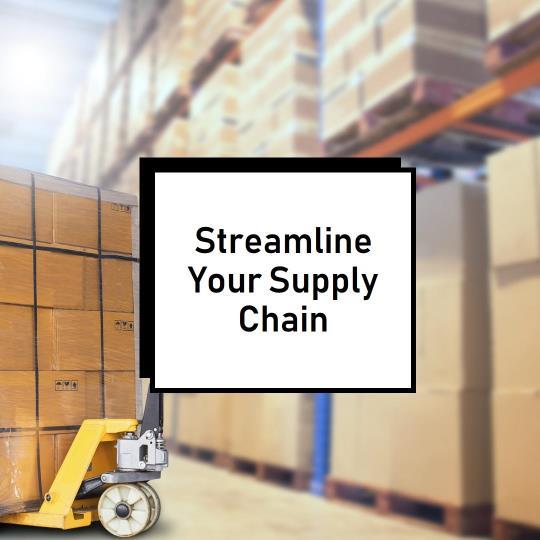
The Impact of Blockchain Technology on Supply Chain Management in the Future
In the Logistics NZ environment, buying raw materials and delivering completed items can lead to the development of a complicated web of interconnected activities. Businesses in this ever-changing environment need audit trails and total transparency. Blockchain technology shifts the rules and makes this possible.
Logistics firms may now keep an irreversible log of every activity and transaction in the supply chain thanks to blockchain technology. This distributed ledger prevents any data from being altered, compromised, or changed in any way. We can now verify our information without relying on third parties or time-consuming processes.
Blockchain tracking allows businesses to track shipments more accurately and efficiently by allowing them to be checked in real-time. Every step of the process is fully transparent to all parties involved because it is fully recorded on the blockchain. Furthermore, blockchain-powered smart contracts have the capacity to autonomously carry out its terms in the event that predetermined criteria are satisfied. Using these self-executing agreements saves time and money because no middlemen are needed.
Techniques for Promoting Your Product
A small business's ability to distribute products to customers effectively can make or break it. These businesses' limited resources and budgets force them to deliver their products to clients in the most economical and efficient way possible.
Partnering with local stores and companies could help you market your brand. Instead of spending a lot of money creating their own distribution channels from scratch, small firms can use networks and contacts to reach their current clientele. This tactic not only raises awareness but also garners local support.
Using online marketplaces and e-commerce Distribution NZ platforms is an additional option. Online buying is popular, especially in this digitally advanced day. When small firms sell on e-commerce sites like Amazon or eBay, they can minimize expenses and reach a large customer base and well-established infrastructure.
By reducing administrative costs, small firms can potentially boost profitability by implementing a direct-to-customer (DTC) business model. By using this strategy, businesses may be able to manage their supply chains more skillfully from start to finish. Online storefronts and social media profiles are common components of direct-to-consumer marketing methods.
The Issues with Storage in the Age of E-Commerce
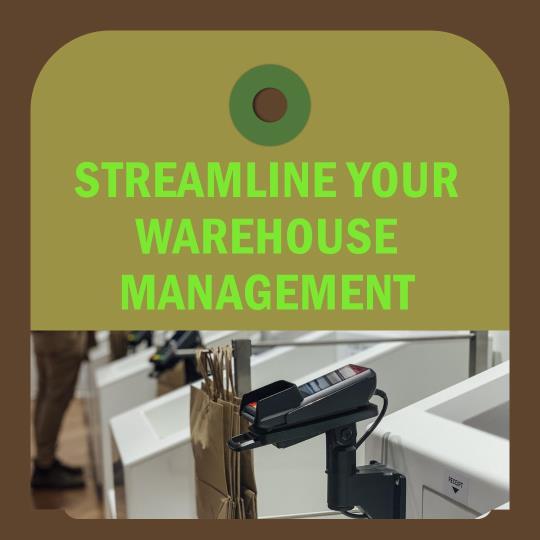
It takes effective Warehouse Management NZ to thrive in the quickly changing e-commerce industry. Warehouses and fulfillment centers are under more pressure to meet the constantly rising needs of their customers as a result of the growth of e-commerce. Blockchain technology's cutting-edge capabilities of traceability, security, and transparency are drastically changing warehouse management. Businesses can manage their inventory in real-time with blockchain technology, reducing the chance of mistakes and overproduction.
Blockchain technologies maintain an unchangeable record of every warehousing transaction. Knowing an item's origin allows businesses to guarantee improved quality control and more transparency. This kind of transparency is especially helpful in the event of a product recall or malfunction, when time is of the essence to discover the afflicted units.
Warehouse automation is also possible because to blockchain technology's smart contracts. These automatically enforcing contracts eliminate the need for human intervention during the distribution and storage procedures. When smart contracts are coupled with blockchain-based systems, automation may be utilized to handle operations like supplier collection and order fulfillment to customers' doorsteps.
If logistics and warehousing companies in New Zealand (NZ) want to thrive in the long run, they will undoubtedly need to use blockchain technology. With consumers expecting a flawless online experience in the digital age, increased transparency, efficiency, and security are essential benefits.
0 notes
Text
With These Tried-and-True Methods, Transform Your Inventory Management
The successful functioning of a business is significantly influenced by inventory management, which is an essential component of it. Supervising and managing the movement of items from the production location to the retail location is part of it. A company can minimize stockouts and excess inventory by using effective inventory management to make sure the proper amount of goods is always on hand. We'll look at the value of inventory management NZ, the difficulties that companies have keeping track of their stock, and methods for putting in place efficient systems.

Recognizing Inventory Management's Significance
Managing the flow of commodities from manufacture to sale is referred to as inventory management. Monitoring stock levels, estimating demand, and determining when to place new stock orders are all part of it. Having the proper amount of inventory on hand to fulfill consumer demand is made possible by effective inventory management, which is essential for corporate success.
The operations of a business can be greatly impacted by inadequate inventory management. Overstock ties up important funds and storage space for a business. Conversely, a business may have stockouts and missed sales if it has insufficient inventory. Moreover, inadequate inventory control can raise carrying expenses, including insurance and storage premiums, and raise the possibility of spoilage or obsolescence.
Insights into the Value of Supply Chain Streamlining
A simplified supply chain can have significant positive effects on a company's bottom line. As a first benefit, it can aid in saving money by preventing waste and inefficiency in the supply chain. The costs associated with storing and transporting inventory, as well as other operational expenses, can be reduced if a company optimizes its procedures and shortens its lead times. Having less of your company's working capital stuck in stock is one more way a simplified supply chain may boost cash flow.
When things are delivered on time and in full, it can do wonders for customer satisfaction, which is why streamlining the supply chain is so important. Business owners may more precisely predict demand, schedule manufacturing, and coordinate delivery with improved supply chain visibility and management. More satisfied customers are more likely to return and spread the word about their excellent experience.
Overall, corporate operations can benefit from a more supply chain management NZ as well, as it increases efficiency and production. Businesses can improve their throughput and productivity by removing bottlenecks and cutting down on cycle durations. As a result, the company may be able to generate more income and see greater profits.
Keeping Your Warehouse Up to Date with Industry Developments
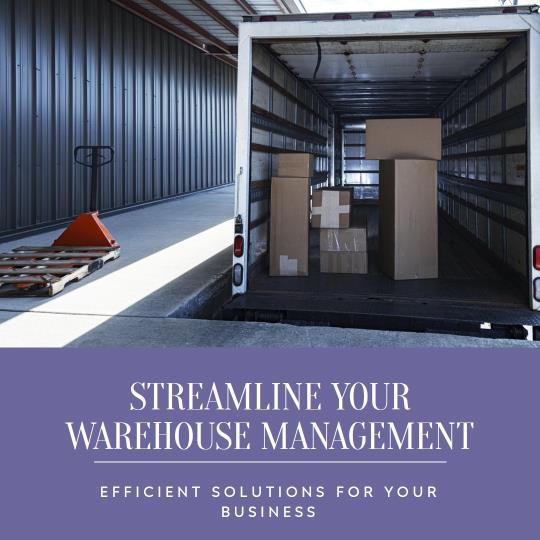
You should "future-proof" your warehouse management NZ sustainability and long-term profitability by getting ready for shifts and upheavals in the sector. It requires being open to trying new things, having a solid grasp of the state of the market, and being able to react quickly to the ever changing needs of the clients.
The following are some tactics to future-proof your warehouse:
Participate in continual learning to stay abreast of technological advancements, industry developments, and best practices. Attending webinars, seminars, and conferences can help you network with other subject matter experts in your area.
Using cutting-edge technology can help a business stay competitive and increase productivity. Examples of these technologies include automation, robotics, artificial intelligence, and data analytics.
It takes a flexible and adaptive system to build a warehouse that can easily react to changing consumer needs and market disruptions. Investing in readily extendable technologies and creating a flexible, modular layout are two examples.
An exhaustive analysis of present procedures, problem identification, and solution implementation are necessary for an efficient inventory management system. Inventory management may be improved through automation and data analytics by revealing demand trends and simplifying operations. Enhancing inventory management techniques can be achieved through supply chain optimization, technology, and lean inventory management.
0 notes
Text
Handling the Challenges of Supply Chain Management in New Zealand

Supply chain management is the coordination and management of all activities involved in the production and delivery of goods and services, from the acquisition of raw materials through the distribution of finished goods. To ensure that commodities are delivered to customers in a timely and efficient manner, the Supply Chain Management NZ process entails planning, executing, supervising, and managing every part of the chain.
Supply chain management makes it possible for goods and services to be moved throughout the country efficiently, which is essential to New Zealand's business climate. The economy of the small island nation of New Zealand is primarily reliant on imports and exports. Businesses need to have an effective supply chain management system in place in order to meet customer demands and remain competitive.
An In-Dependent Analysis of Supply Chain Management in the Business Environment
Supply chain managers face unique challenges in New Zealand's business environment. It is harder to set up efficient supply chains in this little nation due to its geographic isolation and small size than in larger countries with better developed infrastructure. Large distances between producers, suppliers, and customers can contribute to higher costs and longer lead times. There are also less options for transportation.
Given New Zealand's reliance on imports, a company's vulnerability to risks such as fluctuating exchange rates, customs regulations, and geopolitical unpredictability is heightened. These factors may affect the availability of completed items and raw resources, as well as disrupt supply chains. With the unpredictable weather of the nation, natural disasters like hurricanes and earthquakes may cause delays in the supply chain or harm to goods.
The Impact of Automation and Robotics on New Zealand Distribution
Automation and robotics have the potential to drastically change New Zealand's distribution industry. These technologies can reduce costs, boost productivity, and enhance safety in Distribution NZ operations. However, they also provide challenges that businesses must overcome.
One of the main benefits of automation and robots in distribution is the ability to automate repetitive tasks like order picking and packing. This can not only reduce human error but also significantly increase production. Additionally, the application of robots helps optimize warehouse layout and improve Inventory Control NZ.
Many New Zealand businesses are currently automating and roboticizing their distribution processes. Foodstuffs North Island, for example, implemented an automated system for storing and retrieving commodities in its distribution center to increase efficiency and reduce labor costs.
Automation and robotics in distribution seem to have promising possibilities. Technological breakthroughs such as artificial intelligence and machine learning have the potential to enable robots to perform increasingly complex tasks and adapt to changing environments. In order to ensure that these technologies align with their overall business strategy, businesses need to carefully consider the benefits and drawbacks of implementing them.
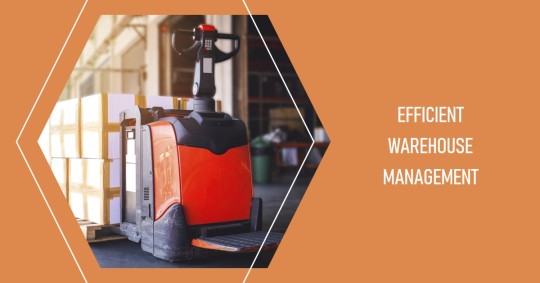
The Main Challenges of Inventory Management
Organisations may find it challenging to manage inventories for a variety of reasons. Typical problems include incomplete demand predictions, inconsistent order fulfilment processes, and a lack of inventory knowledge.
Inaccurate demand projections can lead to overstocking or understocking, which is a serious problem for businesses. While overstocking takes up resources and storage space, understocking can result in dissatisfied customers and lost sales. Ineffective order fulfillment operations may also result in delays in product delivery to customers. Reduced sales and unhappiness from customers could result from this.
Another problem is not being able to see inventory levels. If businesses don't have real-time visibility, they could find it challenging to properly manage stocks and determine when to place fresh orders. This might lead to two things: stockouts and excess inventory, both of which could have a detrimental impact on business operations.
Effective supply chain management is a need for businesses in New Zealand who wish to satisfy customer demands and maintain their competitiveness. Difficulties include the nation's unique business climate, remote location, limited resources, and unpredictable weather. Companies may, however, minimize risks, manage supplier relationships, use technology, and promote cooperation to handle these complexities and optimize their supply chains.
1 note
·
View note